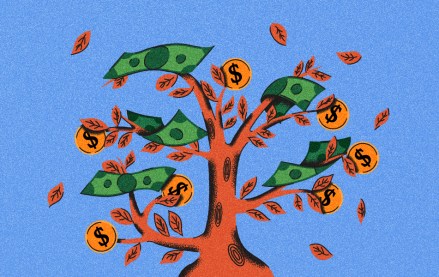Publishers give on-site search a long-needed upgrade in the form of AI chatbots

Publishers are testing generative AI technology to update a rather boring function on their sites that hasn’t been updated in a while: search.
Forbes and the Financial Times have debuted their own AI chatbot search products over the past few months. Snopes will launch an AI-powered on-site search product by the end of this month, and Trusted Media Brands plans to debut a similar product for its video licensing platform later this spring. Meanwhile, The Guardian, Business Insider and another news publisher — which asked to remain anonymous — are also looking into improving their on-site search functions with generative AI technology, though they are in the early days of testing.
“AI site search is an easy way for us to test AI in a low risk, low impact environment,” said a spokesperson from the anonymous news publisher, especially since on-site search is “not a widely-used function.”
Beyond improving the functionality of on-site search, the nine publishers that spoke with Digiday said the goals behind these initiatives are to improve reader engagement, provide answers to readers’ queries using a publisher’s own archive of content and — in some cases — create an added value for paying subscribers.
“We figure that our search experience on our site, like most publishers … really sucks,” said a publishing executive during a town hall session at the Digiday Publishing Summit in Vail, Colorado, during which publishers were granted anonymity under Chatham House rules. Their company is in the process of building an AI-powered search tool as a “better version of [on-site] search,” they said. “Our feeling is it makes our archive more usable.”
A second publishing executive in the town hall said adoption of the search chatbot their company had recently launched for subscribers was “incredibly low,” despite the fact that they added once people do use the tool, click through to the publisher’s content was “really, really high.”
Inside the development of Snopes’ chatbot search tool
Snopes created its AI-powered search tool, tentatively called Factbot, to test its own proprietary large language model that will be trained on the publisher’s archives. The hope is that this will put Snopes in a “negotiating position” with AI tech companies if and when The New York Times’ lawsuit against OpenAI gets solved, said Justin Wohl, CRO of Snopes and TV Tropes. (Wohl noted that Snopes gets a “decent volume” of search usage on its site, though he declined to say exactly how much.)
Factbot is built on Anthropic’s Claude AI model and will provide links to articles in response to search queries, as well as summarized, AI-generated answers based on Snopes’ content. Wohl added that the goal is to keep search users on the site longer.
Down the line, Wohl sees a future where Snopes can connect its model to ChatGPT’s, so that a user can “at-mention” Snopes when asking questions — as long as there’s also a financial agreement between the two companies, he said. While this feature exists currently, Wohl said he is unaware of deals with other publishers that incorporate this capability.
A subscriber benefit
The Financial Times launched an AI-powered search chatbot in beta last month, marking its first generative AI product benefit for subscribers. It allows FT Professional members to ask a question and receive a generated response, based on the FT’s content. From the pool of 8,000 businesses and organizations subscribed to FT Professional, 500 individuals currently have access to the tool, Nick Fallon, managing director of FT Professional, told Digiday.
FT wanted to give subscribers who have “specific research needs” a tool to “deliver the answers they’re looking for or give them a solid entry point to further analysis,” Fallon said.
The goal of the tool is to save readers time, provide helpful summaries of information and offer subscribers another way to engage with the FT’s content, he added. As more subscribers use it, the AI-powered tool will also give the FT team data on what information subscribers are looking for and allow them to analyze usage behavior (including how readers are returning to it), as well as see if there are other AI-powered products the FT could build for subscribers, Fallon said.
So far, over 75% of the tool’s responses have been rated as “useful” by the test group and 70% of readers used the tool within the first 24 hours of access, according to Fallon. The FT wants to open up the tool to all FT Professional subscribers in the next couple of months, he added.
Marketing AI tools amid adoption issues
Marketing these tools does seem to be a challenge. The second exec in the Digiday Publishing Summit town hall said their company was still figuring out how to make subscribers aware of its product. The FT’s Fallon said the company will use insights from its tool’s beta test to help market its benefits to users when it’s more widely available.
Snopes will launch its chatbot search tool with a published story detailing the development of the product, as well as promote it in newsletters and social accounts, Wohl said.
Vadim Supitskiy, Forbes’ chief digital and information officer, told Digiday in December that the company was working to get more readers to use the generative AI search tool called Adelaide, which went live in October. He said that while initial findings were showing positive signs of user engagement and users returning to the tool, the team was working on how to better promote it. He declined to share specifics at that time, and Forbes declined to provide additional comment for this story.
Time and money
Two publishing execs told Digiday it took about two to three months to get these search chatbots up and running.
TMB’s data science team created an algorithm to enhance the metadata from the publisher’s existing library of user-generated video clips that it licenses with AI-detected data (such as objects, scenes and labels) and built a search prototype around this combined dataset, said Jacob Salamon, TMB’s vp of business development. The product “quickly outperformed the quality and detail of the existing search functionality on our licensing platform,” Salamon said.
The costs associated with these chatbots don’t seem to be too restrictive. Wohl referred to the addition of Snopes’ search chatbot to its Amazon Web Services (AWS) bill as “negligible,” from tens to hundreds of dollars — at least as long as the model is trained every once in a while. (Amazon is an investor in Anthropic, which runs Claude AI.) Those numbers could go up if a publisher produces large volumes of content, requiring models to be retrained on a daily basis, for example, according to Wohl, but that’s not the case for Snopes.
Forbes’ Adelaide was built using Google’s Vertex AI, Google Cloud’s machine learning product for search and conversation, which has a consumption-based pricing model, ranging from less than a cent per 1,000 generated characters for text-based content to a couple of dollars per hour for visual content.
One way to offset those costs, in a way, is a value exchange. Snopes is requiring users of its generative AI search tool to create a free account with their email, allowing the publisher to capture that piece of a user’s identity and build up its first-party data.
“I think the publishers’ cost consideration … is how frequently the training has to happen. And I don’t think that we’ll know that really until we go live,” Wohl said.
This story was updated to clarify that 8,000 businesses and organizations are subscribed to FT Professional, not individual subscribers.
More in Media

News publishers may be flocking to Bluesky, but many aren’t leaving X
The Guardian and NPR have left X, but don’t expect a wave of publishers to follow suit. Execs said the platform is still useful for some traffic and engaging with fandoms – despite its toxicity.

Media Briefing: Publishers’ Q4 programmatic ad businesses are in limbo
This week’s Media Briefing looks at how publishers in the U.S. and Europe have seen programmatic ad sales on the open market slow in the fourth quarter while they’ve picked up in the private marketplace.

How the European and U.S. publishing landscapes compare and contrast
Publishing executives compared and contrasted the European and U.S. media landscapes and the challenges facing publishers in both regions.








